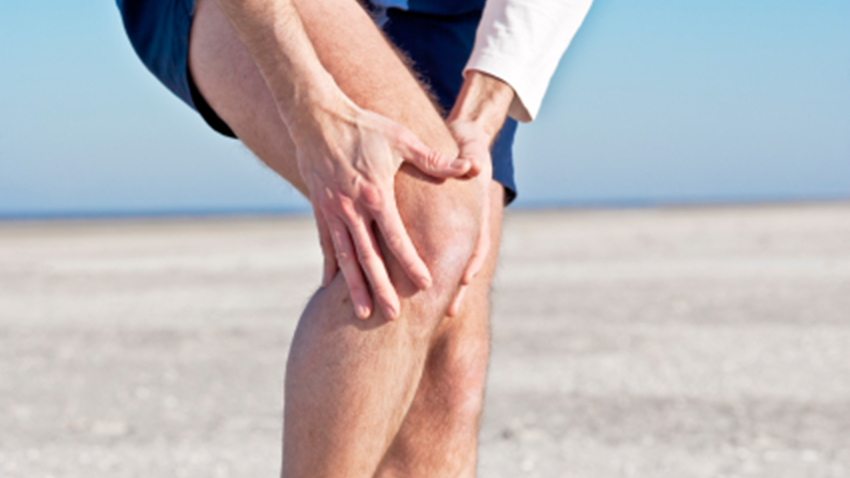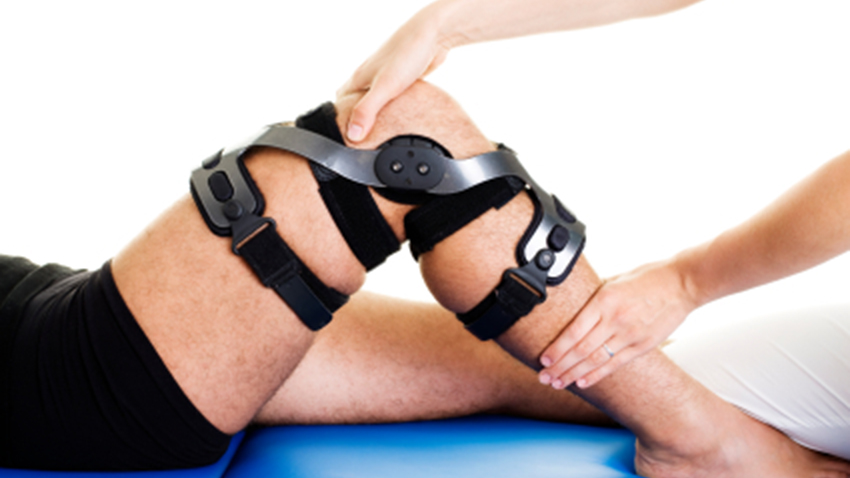Chronic Disease Education
Acute Condition Education
Working with your Family Physician
Working with Allied Care Providers
PCL (Posterior Cruciate Ligament) Injury

Knowledge is Power.
True/False - Quiz: Do You Understand PCL (Posterior Cruciate Ligament) Injury?
Information - PCL (Posterior Cruciate Ligament) Injury - Knee Surgery

POST SURGERY - FREQUENTLY ASKED QUESTIONS
If you have recently undergone knee surgery please review the below information to help you navigate through your post operative care.
1.) How long will I need to be on crutches after surgery?
Answer: Depending on the surgery performed you may not need crutches at all. If you do need crutches, they will be required for a period of time up to the point that you are walking with a reasonably normal gait without a significant limp or swelling to the knee. This is usually approximately 2-4 weeks.
2.) How soon can I try and walk after surgery?
Answer: You are encouraged to walk immediately with the use of crutches but only for very short distances, for example, around your home.
3.) When do I start bending my knee after surgery?
Answer: You are encouraged to bend you knee as soon as possible. Move the knee through any pain free range of motion.
4.) How much should I be able to bend it after surgery?
Answer: There is no limit to movement other than pain. You should only move it to a pain free position.
5.) Why do I have calf pain?
Answer: This is very common but if it is very painful and swollen it could be something more significant and you may be required to seek medical attention.
6.) If I have blisters on the wound, what should I do?
Answer: Blisters can occur due to the steri strips. They will resolve on their own but if they burst just keep the wound dry and it will resolve.
7.) When can I start to workout again?
Answer: You can start to workout once all the wounds have healed. This usually occurs after about 1 week.
General PCL (Posterior Cruciate Ligament) Injury - Knee Surgery Information
The PCL (posterior cruciate ligament) is a ligament found in the back and central region of the knee. It connects the thigh bone (femur) to your shin bone (tibia), and stops the shin bone (tibia) from sliding backwards. You can injury your PCL in a number of ways, often in motor vehicle accidents if you strike the dash with your knee flexed at 90 degrees. In sports, it can happen when you land on your knee or if you hyper-flex or hyper-extend the knee and get hit.
Symptoms of a PCL Injury
Unlike an ACL injury or meniscus tear, patients may not even realize they’ve suffered a posterior cruciate ligament sprain or tear. Patients who have suffered a PCL injury may experience:
• Pain
• Swelling
• Trouble bearing weight on the knee or walking
• A feeling of wobbliness in the knee
If you think you’ve injured your posterior cruciate ligament you should either go to the emergency department, see a physiotherapist, or see your family doctor. Depending on the degree of the injury that you’ve sustained, your healthcare provider will recommend physiotherapy, the RICE (rest, ice, compression, elevation) method, pain medication, bracing or surgery.
The doctor may order x-rays to rule out any other injuries, as a posterior cruciate ligament tear can sometimes be associated with a bony evulsion (when the ligament pulls off a piece of bone). He or she may also ask you to walk, as difficulties walking can be a symptom of PCL injury.
Treatment for Posterior Cruciate Ligament Injuries
 Most lower-grade PCL injuries can be rehabbed and treated with strengthening through physiotherapy and exercise, often while wearing a knee brace. A significant posterior cruciate ligament injury may require surgery. Rather than stitching together the torn ligament like with an ACL injury, the orthopedic surgeon will replace the torn PCL with new tissue. This usually involves using tissue from a deceased donor or by harvesting a piece of tendon from another part of the body.
Most lower-grade PCL injuries can be rehabbed and treated with strengthening through physiotherapy and exercise, often while wearing a knee brace. A significant posterior cruciate ligament injury may require surgery. Rather than stitching together the torn ligament like with an ACL injury, the orthopedic surgeon will replace the torn PCL with new tissue. This usually involves using tissue from a deceased donor or by harvesting a piece of tendon from another part of the body.
There is a less invasive procedure that may be an option: arthroscopic knee surgery. The orthopedic surgeon can make a smaller incision and your recovery time might be shorter. Recovery after a PCL injury generally takes up to six weeks, but if you require surgery, it can take up to 52 weeks.
Talk to your healthcare provider if you'd like more information on PCL injuries.
Visit HealthChoicesFirst.com for more videos and resources on sports health.
Print this Action Plan and check off items that you want to discuss with your healthcare provider
-
Patients may not even realize they’ve suffered a PCL sprain or tear. Symptoms can include pain, swelling, trouble bearing weight on the knee or walking and a feeling of wobbliness in the knee.
-
Depending on the degree of the injury that you’ve sustained, your healthcare provider will recommend physiotherapy, the RICE (rest, ice, compression, elevation) method, pain medication, bracing or surgery.
-
Most lower-grade PCL injuries can be rehabbed and treated with strengthening through physiotherapy and exercise, often while wearing a knee brace.
-
A significant posterior cruciate ligament injury may require surgery. There is a less invasive procedure that may be an option: arthroscopic knee surgery.
-
Recovery after a PCL injury generally takes up to six weeks, but if you require surgery, it can take up to 52 weeks.
